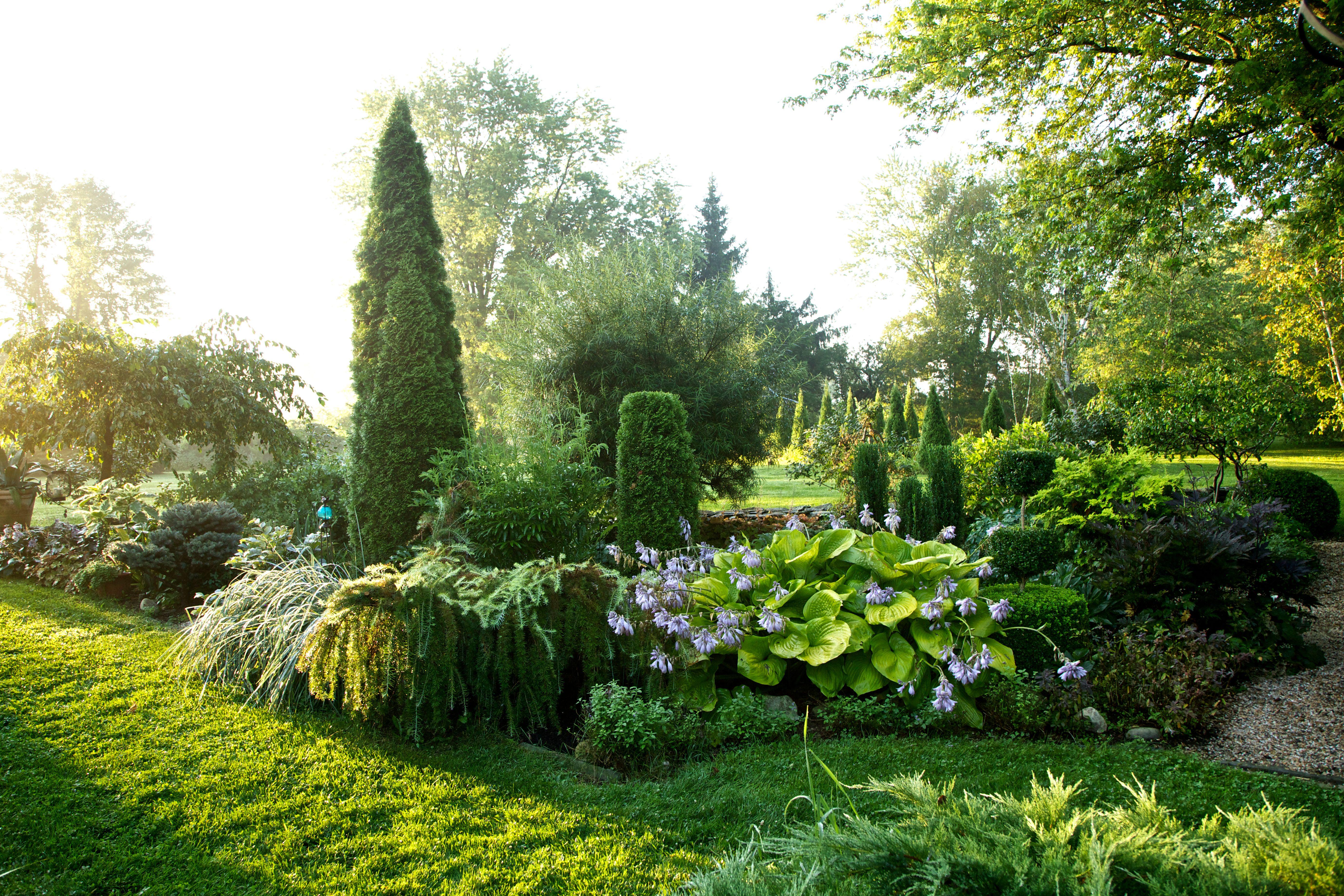Key Takeaways
- The pollen causing seasonal allergies is windborne.
- Pollen producers include deciduous and evergreen trees, grasses, and weeds.
- Choose landscape plants with heavy, non-windborne pollen to reduce pollen exposure.
For allergy sufferers, pollen makes being outside a miserable endeavor at certain times of the year. The minuscule airborne granules are essential for seed formation across the plant world, and gardening takes you up close and personal with pollen, causing a host of symptoms, including watery eyes, a stuffed nose, and sneezing.
Being familiar with the types of plants that bring on allergy symptoms helps you time your outdoor activities better and minimize your exposure to pollen allergens so you can still get your yardwork done and enjoy the beauty of your landscape.
Windborne vs. Insect-Pollinated Pollen
Seasonal allergy sufferers are sensitive to windborne pollen (called anemophilous pollen). The flowers of certain plants release the microscopic, light-weight pollen grains in massive quantities. The pollen floats through the air with the goal of landing on a like flower so that seeds develop.
Less than 20 percent of the world’s plants have windborne pollen. The bulk, 80 percent of plants, rely on insects or other animals to transfer their heavy pollen from one plant to another. Wind cannot move this weighty pollen; bees, butterflies, and a host of other creatures must do the job.
This is good news for allergy sufferers. Most of the flowering plants in our gardens produce pollen that never takes flight and does not contribute to seasonal allergies. The bright-colored zinnias, fragrant lilies, and showy hydrangeas in your borders are not the source of pesky allergenic pollen.
Related
Sources of Windborne Pollen
Plants with windborne pollen tend to have inconspicuous flowers. Since they don’t rely on pollinators to transfer pollen, they don’t waste valuable energy by producing large flowers or flashy petals—in fact, some have no petals at all—to attract the attention of insect or animal visitors. In this reproduction method, the wind does the work of distributing the lightweight pollen.
1. Deciduous Shade Trees
That shade tree in your backyard might be the largest source of seasonal pollen in your landscape. Ash, birch, elm, hickory, maple, mulberry, oak, walnut, and willow trees are prolific pollen producers in early to late spring. Their pollen fills the air for a week or more.
Don’t let their allergenic pollen keep you from planting these trees though. The environmental benefits—think habitat, animal food source, and biodiversity—greatly outweigh the challenge of seven to 14 days of sneezing and sniffles.
2. Cedars and Junipers
The pollen from mountain cedar trees and certain juniper species causes what is called "cedar fever," which isn't an actual fever but a severe allergy against the windborne pollen of these evergreen trees and shrubs.
Cedars and junipers are unique in that they release their pollen from cones all at the same time, usually right after a cold front passes through in midwinter in warm regions. The vast quantity of pollen being released all at the same time makes the trees look like smoke is rolling off them.
Because mountain cedar pollen can travel hundreds of miles, it's difficult to avoid. To avoid a high pollen load in your immediate surroundings, planting an evergreen that does not produce pollen, such as a female cedar or a yew, is a good alternative.
3. Grasses
Lawn grass releases windborne pollen when it blooms in late spring and early summer. Keep lawn grass pollen to a minimum by mowing your turf regularly. Maintaining your lawn at a height of 3 to 4 inches prevents seed heads from forming and pollen from filling the air.
Ornamental grasses bloom in midsummer. If you suffer from seasonal allergies in midsummer, avoid planting ornamental grasses and consider alternative plants that have a similar form yet no windborne pollen. Siberian iris is a workable substitute for upright ornamental grasses.
4. Weeds
The most notorious windborne pollen producer among lawn and garden weeds is ragweed, though blooming sagebrush, redroot pigweed, lamb’s quarters, Russian thistle, and English plantain also trigger allergies. Weed pollen levels peak from late summer to early fall.
Remove any weeds promptly, ideally as soon as you notice them, and at the latest before they start blooming.
Living with Pollen Allergies
Don’t let airborne pollen deter you from gardening; there are many strategies for lessening the impact of seasonal allergies. Here are a few tips:
Don't plant pollen producers in your yard. Choose flowering plants that do not have windborne pollen but have heavy pollen that needs pollinators to be moved. The amount of allergy-inducing pollen is minimal, and the pollinator population benefits from the delightful oasis.
Time it right. Pollen counts are lower in the morning. Rain often washes pollen from the air, but especially heavy rain can also have the opposite effect and make pollen levels spike because it breaks up pollen on the ground, so the fragments linger in the air for several hours after the rain. Avoid being outside in dry, windy conditions when airborne pollen is most prevalent.
Check the pollen count. Get an accurate measure of pollen in your area with the help of a weather or pollen count app. Use this info to chart your outside time. Pollen counts may vary widely from day to day. Take advantage of low pollen count days.
Refresh. After spending time outside, shower and change your clothes to eliminate pollen that hitched a ride indoors with you. This greatly reduces the allergens in your living space.



